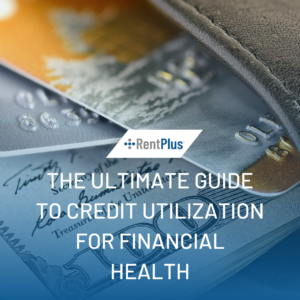Have you ever heard the phrase “Building wealth is a marathon, not a sprint,” from Dave Ramsey? For those who have ever run a marathon, running 26.2 miles can seem daunting, especially when you’re at mile 1. But if you take your marathon one sprint at a time, it can make the marathon seem less intimidating. This is a lot like budgeting. While you may feel like it’s impossible to pay off thousands of dollars in debt, if you look at it one step at a time, you’ll start to see that you can do this.
In a marathon, many runners just focus on making it to the next aid station, as opposed to looking at the race as a whole. If you can make it to the next aid station, you’ll get some Gatorade and maybe even some Gu to help boost you forward to the next aid station, until you’ve finally reached that finish line. Most marathons usually have an aid station every two miles, totaling 12 aid stations. So, we’ve decided to break up your marathon of obtaining financial freedom into 12 different sprints to help you achieve your goal.
1. Decide to get out of debt. The first sprint, and the most important one, is to make the decision to get out of debt. You can’t run a marathon half-heartedly, just like you can’t get out of debt if you’re not serious about putting forth the effort. Knowing that it was your own personal decision to become financially free will help boost you forward when those rough hills may make you question your decision to run this marathon in the first place.
2. Start a budget. The best way to know how you can cut back and save is to take stock of all of your income and expenses. The most efficient budget is a written, monthly budget. It’s one thing to think you know where your money is going, it’s another to actually see it for your own eyes.
3. Decide where you can cut back. Now that you know how much you’re spending each month, it’s time to decide if there’s anything you can cut back on and put towards paying off debt. It could be something like not going out to eat as much or going on less coffee runs.
4. Create a starter emergency fund. Many marathon runners carry an extra Gu or water bottle with them during the race to use if they “hit the wall.” An emergency fund of $1,000 will help you during those unexpected events in life like car problems or hospital bills.
5. Organize your debts. Now is a good time in your budgeting marathon to look at all of your debt and evaluate how to pay it off. How much do you owe on your credit card, car loan, or student loans? You could organize your debt from smallest to largest and work on the debt snowball or from highest interest rate to lowest and work on the laddering method. Decide which option will work best for you and start working on getting rid of that debt!
6. Pick up a side job. If you’d like to put more money towards paying off your debt, it might be worthwhile to pick up a side job or seasonal work. This might be hard in the short term, but it’ll make a huge difference in the long run when you’re able to become debt-free more quickly.
7. Sell items you don’t need. Now that you’re living within your means and putting as much money as you can towards paying off debt, this could be a good time to give yourself a running boost. Take stock of your belongings and decide if there’s anything you don’t use that you could sell and pay down your debt. You could have a garage sell or sell stuff online.
8. Pay off debt. If you can get to this point in the marathon, the finish line is just around the corner. Once you’ve paid off all of your debt, you can use your money to invest in yourself and your future.
9. Create an emergency savings of 3 to 6 months’ expenses. Now that you’re out of debt and on the home stretch, it’s time to ensure you stay out of debt for good. By creating a 3-6 months’ emergency savings, you can protect yourself against the bigger surprises in life like losing a job.
10. Invest in your retirement. As you set your sights for the finish line, it’s time to ensure you’re properly ready for retirement. Invest at least 15% of your household income into your 401(k), Roth IRA, or Traditional IRA. Meet with a financial advisor to decide how much you should invest in your retirement, so that you can live comfortably when you retire.
11. Create a college fund for your children. With your own financial security in motion, it’s time to start thinking about the ones you love. Creating a college fund for your children will help them avoid college loans; therefore, giving them a step up in achieving their own financial freedom.
12. Pay off your home early. The last step in becoming financially free is to pay off your largest debt: your mortgage. Once you no longer have credit card or loan payments, you can pay extra on your mortgage until you’re completely debt free. Just think of all the money you could invest in yourself when you’re no longer making mortgage payments!
Many marathon runners like to think of the marathon as a journey. They remember each uphill climb and downhill stretch. They remember when they thought this race would never end and when they finally crossed that finish line. It’s hard work. But it’s ultimately worth it.
There may be times when you think you can’t reach the finish line, but if you keep sprinting forward, you’ll be there in no time. And then you can sit back and enjoy a nice, cold drink.




